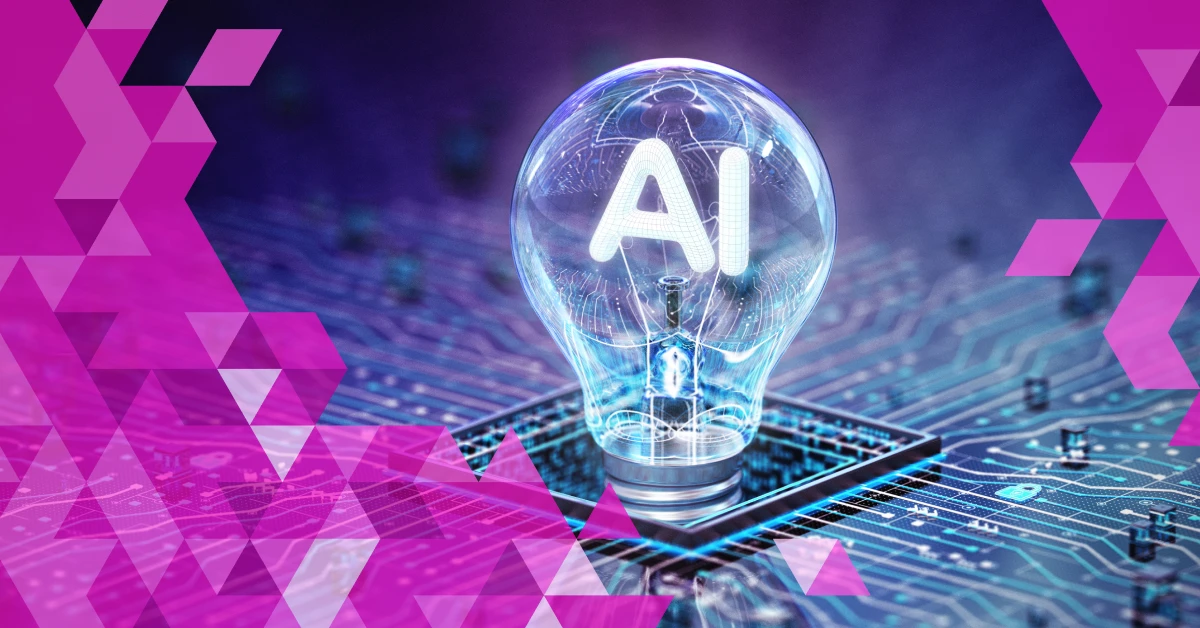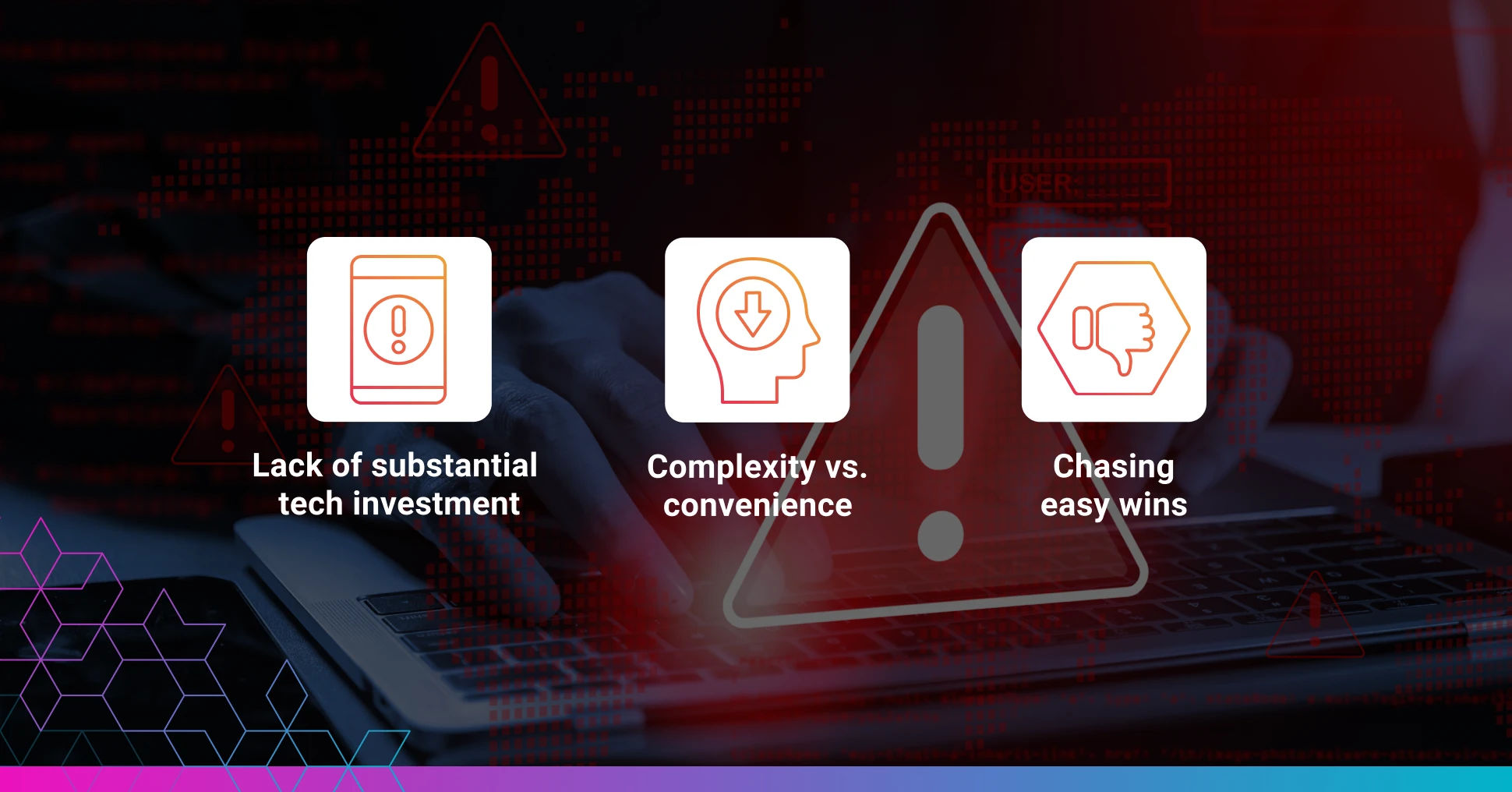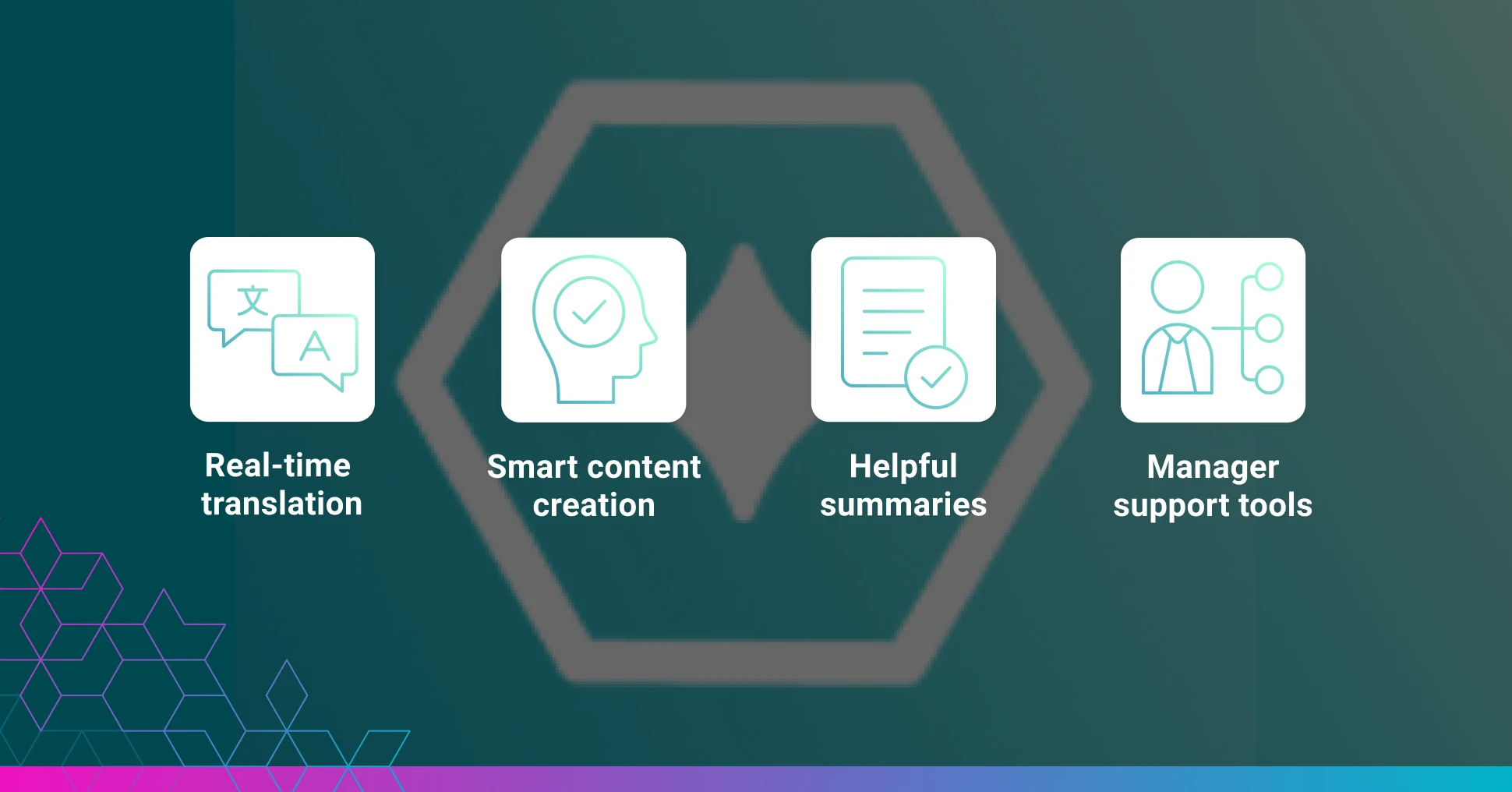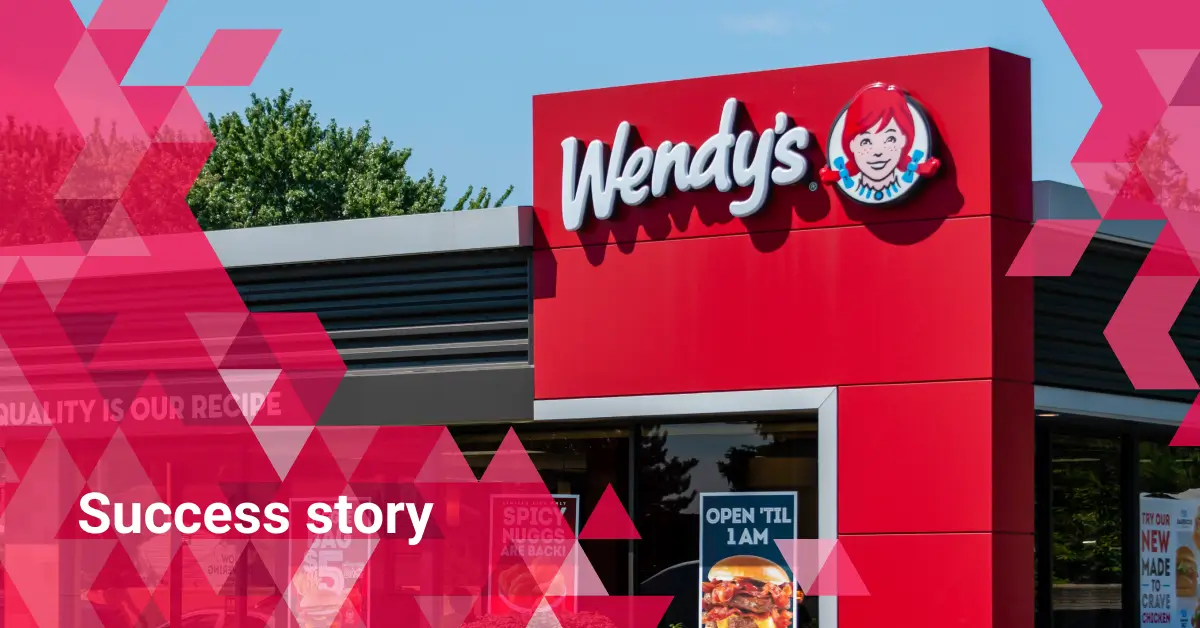How to build AI that frontline teams will actually use

Table of contents
- Why frontline workers have been left behind in the AI economy
- Closing the AI design gap in deskless environments
- Four principles of frontline-ready AI
- The Beekeeper approach to frontline AI
- Meet Maia: The AI assistant for the frontline
- Where Beekeeper AI is headed next
- Pushing the frontline forward with intuitive AI
Most AI today is designed for desk workers — quiet offices, personal logins, and uninterrupted screen time. But that’s not the reality for frontline teams.
Frontline workers operate in fast-paced, physical, and sometimes chaotic environments where time is tight and distractions are constant. From factory floors to hotel hallways, their workflows look nothing like a typical office — and their technology shouldn’t either.
AI for the frontline demands a different standard. It can’t just be transplanted from office settings — it has to be redesigned for the conditions of frontline work.
At Beekeeper, we believe frontline AI needs its own playbook that respects the unique constraints, environments, and contributions of frontline teams. This post starts a series that explores how AI must be reimagined to meet the needs of frontline workers — and what that looks like in practice.
Why frontline workers have been left behind in the AI economy
Frontline teams haven’t been intentionally excluded from AI, but they have been overlooked. Most digital innovation has historically focused on desk-based roles because they’re easier to define, design for, and deploy. The same trend is playing out with AI.
The result? Frontline teams are under-resourced in the very areas where AI could help the most: speed, clarity, efficiency, and safety.
So why has AI failed to reach the frontline in meaningful ways? It comes down to three core issues:
- Lack of substantial tech investment
The AI revolution has often deprioritized frontline industries like manufacturing, logistics, and hospitality. Budget constraints, lower adoption rates, and a disconnect from tech vendors — many of whom have never spent time on the frontline — all contribute.
- Complexity vs. convenience
Desk-based AI tools are typically built to solve digital problems, like drafting emails or summarizing meetings. But frontline work is anything but static. It’s physical, dynamic, and often unpredictable. Designing AI solutions for these environments requires more effort and a “boots on the ground” perspective that’s harder to find in the typical tech ecosystem.
- Chasing easy wins
Many AI vendors tend to go after markets with low adoption barriers. That’s why we’ve seen rapid AI adoption and demand in areas like marketing, sales, and HR. But just because the frontline is harder to build for doesn’t mean it’s less deserving. In fact, the potential impact of AI on safety, efficiency, and customer satisfaction is arguably higher for the frontline than anywhere else.

Closing the AI design gap in deskless environments
Frontline workers have very different needs from those in desk-based roles. Their shifts are tightly packed, attention stays on the task at hand, and when the workday ends, they’re rarely looking to log in again just to catch up on office chatter.
AI must fit naturally into the way they work, without demanding extra time or effort.
The problem is that most AI tools today are designed for people with the time, flexibility, and digital literacy to explore and experiment with AI tools, like office workers using ChatGPT to test prompts and refine answers. Frontline workers don’t have that margin, and their jobs are often disconnected from digital systems. Their technology needs to be simple, fast, and immediately tactical — not another thing to learn.
Desk workers may have the time to ask something in ChatGPT, refine their prompt, and ask another question. But on the frontline, AI needs to be focused on speed and impact. It needs to be worth it for the worker to stop their physical job and get real benefit — instantly.”
AI for the frontline must be designed around realities like:
- Shift work: Frontline AI solutions must be fast, intuitive, and frictionless when tasks quickly change hands at the end of each shift
- Shared devices: Without logins or saved settings to come back to, information must be accessible instantly to anyone picking up a frontline device (like a shared tablet).
- Disruptive environments: The user experience needs to be clean, visual, and resilient to interruptions, particularly in noisy work settings
- Language barriers: Frontline teams are diverse, making it critical that AI tools enable multilingual communication and collaboration
The best frontline AI solutions reduce what we call “dwell time.” The goal isn’t to keep workers staring at screens — it’s to get them back to the task at hand with answers in seconds.
Four principles of frontline-ready AI
Frontline workers don’t have time to learn another complicated tool, but they do need to be able to trust the ones they’re given. And right now, as many as 36% say they feel skeptical about AI.
Earning their trust starts with making AI genuinely useful, not gimmicky or generic. If it doesn’t solve real problems or save time, it won’t last. At Beekeeper, these principles guide our approach to AI for the frontline:
- Speed: Frontline AI should deliver clear answers and fast solutions, without tedious steps. Frontline workers need the ability to get a direct response and keep moving.
- Simplicity: AI shouldn’t respond with long documents or links. It should jump straight into action. If someone asks, “How do I take PTO?” the AI tool should reply, “Do you want time off?” and collect the dates, then submit the request on autopilot.
- Inclusion: Many frontline workers don’t have the same level of digital literacy as office workers. AI solutions need to be mobile-first, multilingual, and easy to use with little or no training.
- Trust: AI should feel like a teammate, not a threat to anyone’s day job. That means respecting privacy, using data responsibly, and showing clear value upfront.
The Beekeeper approach to frontline AI
At Beekeeper, we’ve always focused on “last-mile delivery” — ensuring technology reaches the people doing the work, not just the offices where decisions are made. That means building tools that don’t stop at headquarters but extend all the way to the frontline.
This has always been our vision, and AI is no exception.
Frontline workers are often the last to get updates, the last to receive new tools, and the last to benefit from digital innovation. We can change that with AI — but only if we build it with intention.
For frontline AI to deliver real value, it must:
- Help, not hinder, by simplifying, not complicating, frontline workflows
- Stay human-centric, empowering teams with useful insights
- Protect privacy with secure, transparent data practices
- Earn its place on the frontline by solving real problems in real time
AI shouldn’t ask frontline teams to adapt to it. It should be built to adapt to them, seamlessly fitting into their day-to-day routines. In fact, the best frontline AI doesn’t need to announce itself as AI at all. It should just work, helping workers do their jobs easier and faster, without requiring new training, extra effort, or even an understanding that AI is involved.
Meet Maia: The AI assistant for the frontline
Frontline teams don’t need another chatbot. They need an AI tool that helps them get work done. That’s why we built Maia, Beekeeper’s new AI assistant designed specifically for the frontline.
Maia isn’t just a tool for answering questions. It’s a simple, intuitive way to get the information and tools workers need, when they need them — helping frontline teams take action, find answers, and complete tasks in seconds. No long prompts, no training required.
Here’s how Maia is already making an impact:
- Real-time translation helps multilingual teams communicate clearly across shifts and roles
- Smart content creation makes it easy to draft shift updates, team shoutouts, or safety reminders — even with limited time or language barriers
- Helpful summaries surface the key points in shift handoffs, like urgent tasks, safety notes, or team priorities
- Manager support tools track sentiment, generate reports, and suggest next steps so leaders can focus on leading, not just reporting

Where Beekeeper AI is headed next
Maia is already helping frontline teams save time, communicate more clearly, and get work done faster. But we’re just getting started.
As the demands on frontline teams grow, our goal is to make Maia even more helpful, spotting issues early, taking action faster, and supporting teams before problems slow them down.
Here’s what’s coming next from Beekeeper:
- Agentic AI: Instead of waiting for input, AI will take the initiative. For example, when multiple employees call in sick, it can automatically flag the issue, contact qualified replacements, and update the schedule — all without manager intervention.
- Voice interfaces: In sterile or hands-busy environments, voice-first AI will let workers interact without stopping to tap or type — especially useful in healthcare, logistics, and manufacturing. It also improves accessibility for workers with literacy challenges by allowing them to speak or listen instead of reading or writing.
- Operational benchmarking: Visibility into performance shouldn’t require hours of reporting. AI can quickly compare performance across teams, shifts, or sites, helping leaders spot what’s working and where support is needed.
AI is not going to replace frontline work, but enhance it. It will take away all the work that today wastes so much time, allowing frontline teams to focus on what matters most: delivering great service, staying safe, and driving results.”
Pushing the frontline forward with intuitive AI
For too long, frontline teams have been an afterthought in digital transformation. But AI allows us to change that, not by copying what works in the office, but by designing tools that reflect how frontline work actually happens.
When AI is built for real-world conditions, it stops being another system to manage and becomes a trusted partner. It supports the people who keep everything running, protects their time, and helps them focus on what matters most: delivering great service, staying safe, and driving results.
At Beekeeper, our vision is simple: make frontline lives easier. And it starts with designing AI that earns frontline teams’ trust by solving problems, not adding to them.
Ready to see AI built for the frontline? Book a demo to meet Maia, and stay tuned for our next post in the series.

About the author
Kees de Vos
As Beekeeper Chief Product Officer, Kees is the driving force behind our product innovation, dedicated to creating a platform that is both intuitive and impactful. He brings twenty years of leadership experience across the digital technology landscape. His experience spans Product Strategy & Management, Professional Services, and Customer Success, having led these disciplines at leading global SaaS companies and consultancies.
You might also be interested in
Interested in learning more?
Join 1200+ companies transforming frontline work with Beekeeper. Start your journey today to make every task easier, every team stronger, and every shift smoother.







